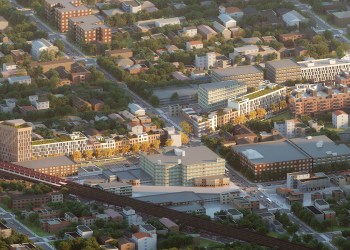A Historic Pair in Flushing and East Elmhurst
The Prince family opened the first commercial plant nursery in the USA in 1735, specializing in fruit trees. Patriarch Robert Prince learned horticulture from the remaining Huguenots (French Protestants) in the Flushing area, and the business flourished during and after the Revolutionary period. In the early 1800s, Robert’s son William opened the first bridge over…


The Prince family opened the first commercial plant nursery in the USA in 1735, specializing in fruit trees. Patriarch Robert Prince learned horticulture from the remaining Huguenots (French Protestants) in the Flushing area, and the business flourished during and after the Revolutionary period. In the early 1800s, Robert’s son William opened the first bridge over the Flushing River that allowed wagon and cart traffic to enter from western Queens. Competing plant nurseries of the Bloodgood and Parsons families also opened, and in the 1800s, Flushing was known around the Northeast for horticulture. Eventually, though, as Flushing gradually became more urban, the nurseries moved out or failed. Today, the only reminder of the plant shops is Flushing’ street plan, which bears plant names from A (Ash) to R (Rose), and Prince Street.
The Prince family home was constructed at Broadway and Lawrence Street (today Northern and College Point Boulevards) by the Embree family around 1750, and purchased by the Princes in 1800. It was torn down in the 1930s as the area became industrial.
A NYS historic marker here, now long gone, said:
Prince Homestead stands opposite. Built by E. Embree 1780. Washington stopped here to see the Prince Nurseries during his trip to Long Island 1789.
When Washington visited the Prince nursery he was unimpressed, but when Thomas Jefferson visited the following year he made several purchases that were planted at Monticello in Virginia.

There’s a little parcel of a neighborhood east of Astoria and north of Jackson Heights, east of the bail bonds offices of Hazen Street, north of the whizzing Grand Central Parkway and west of LaGuardia Airport’s expanse, containing a couple of surprising artifacts. Stop for lunch at the chrome-plated Airline Diner, built in 1952, at Astoria Bouelvard and 70th Street where a scene from Goodfellas was filmed, make your way up Hazen, where buses enroute to Rikers Island roll past, detour a little down 77th Street; east on 19th Road brings you to one of Queens’ oldest homes.
This colonial farmhouse, located at 78-03 19th Road, was by most accounts built by Abraham Rycken Van Lent in 1729, though some historians date the oldest part of the house to be even older…perhaps 1656, according to an American Historic Buildings Survey. Rycken, whose family later changed its name to Riker, is remembered by most New Yorkers for the offshore island he acquired from New York governor Peter Stuyvesant in 1664, later acquired by NYC’s Department of Corrections in 1884. Riker would no doubt have preferred that his well-preserved Queens home be his chief remembrance.
Adjacent to the homestead is the Riker family cemetery, which is unfortunately completely invisible from 19th Avenue and 19th Road, which border it. The cemetery contains some of Queens’ oldest gravesites, including patriarch Abraham Riker (1746) and his son, also named Abraham, who died at Valley Forge (1778).
In 1979, the house and grounds, very much rundown by then, were purchased by the late Michael Smith, who completely renovated and restored the building with his wife, Marion, who still resides there and gives occasional tours. For information, see rikerhome.com.
Photos: U.S. Library of Congress









What's Your Take? Leave a Comment